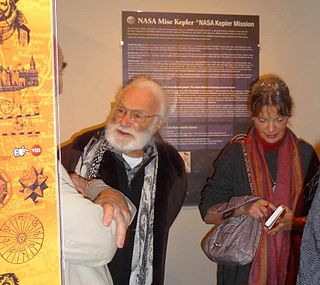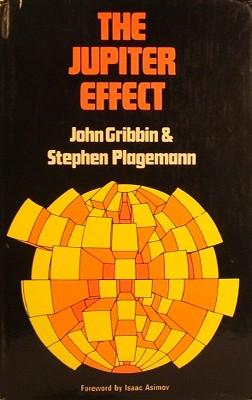Related Research Articles

Posthumanism or post-humanism is an idea in continental philosophy and critical theory responding to the presence of anthropocentrism in 21st-century thought. Posthumanization comprises "those processes by which a society comes to include members other than 'natural' biological human beings who, in one way or another, contribute to the structures, dynamics, or meaning of the society."

Karl H. Pribram was a professor at Georgetown University, in the United States, an emeritus professor of psychology and psychiatry at Stanford University and distinguished professor at Radford University. Board-certified as a neurosurgeon, Pribram did pioneering work on the definition of the limbic system, the relationship of the frontal cortex to the limbic system, the sensory-specific "association" cortex of the parietal and temporal lobes, and the classical motor cortex of the human brain. He worked with Karl Lashley at the Yerkes Primate Center of which he was to become director later. He was professor at Yale University for ten years and at Stanford University for thirty years.

Gavin A. Schmidt is a British climatologist, climate modeler and Director of the NASA Goddard Institute for Space Studies (GISS) in New York, and co-founder of the climate science blog RealClimate.
Fenrir, or Saturn XLI, is a natural satellite of Saturn. Its discovery was announced by Scott S. Sheppard, David C. Jewitt, Jan Kleyna, and Brian G. Marsden on May 4, 2005, from observations taken between December 13, 2004, and March 5, 2005. Fenrir has an apparent magnitude of 25, making it one of the faintest known moons in the Solar System, and was discovered using some of the largest telescopes in the world. It is even too dark to have been observed by the Cassini spacecraft when it was in orbit around Saturn, for which it never got brighter than approximately 17th apparent magnitude. Fenrir was named after Fenrisulfr, a giant wolf from Norse mythology, father of Hati and Skoll, son of Loki, destined to break its bonds for Ragnarök.

The Jupiter Effect is a 1974 book by John Gribbin and Stephen Plagemann, in which the authors predicted that an alignment of the planets of the Solar System would create a number of catastrophes, including a great earthquake on the San Andreas Fault, on March 10, 1982. The book became a best-seller. The predicted catastrophes did not occur.

John Seely Brown, also known as "JSB", is an American researcher who specializes in organizational studies with a particular bend towards the organizational implications of computer-supported activities. Brown was director of Xerox PARC from 1990 to 2000 and chief scientist at Xerox from 1992 to 2002; during this time the company played a leading role in the development of numerous influential computer technologies. Brown is the co-author of The Social Life of Information, a 2000 book which analyzes the adoption of information technologies.
Singularity Education Group is an American company that offers executive educational programs, a business incubator, and business consultancy services. Although the company uses the word "university" in its branding, it is not an accredited university and has no academic programs or accreditation.

Lisa Harvey-Smith is a British-Australian astrophysicist, Australia's Women in STEM Ambassador and a Professor of Practice in Science Communication at the University of NSW. Her research interests include the origin and evolution of cosmic magnetism, supernova remnants, the interstellar medium, massive star formation and astrophysical masers. For almost a decade Harvey-Smith was a research scientist at Australia’s Commonwealth Scientific and Industrial Research Organisation (CSIRO), including several years as the Project Scientist for the Square Kilometre Array Pathfinder and later Project Scientist for the Australian Square Kilometre Array Pathfinder (ASKAP) Telescope.

Sanjiv Rai is a first-generation Indian innovator and serial entrepreneur. He is the Founder, Chairperson and Chief Solver of multiple startups under Billion Innovators and Chairperson at ARE Technologies and his venture initiatives AceWP Innovation Labs and BillionInnovators intend to promote innovation in India and abroad. As a serial Entrepreneur or Innovator he has worked on AI based convergence and design algorithms, on a variety of products and solutions such as network convergence enabling D5 chip, AceWP, PlasmaPHI, innovate2learn, agniie devices, ChazeMe, SmartSAPS(Smart Secured Automated Payment Solutions), coolATM and Rosenbridges Future Cities/Smart Buildings and CHANDRA project for NASA towards permanent human inhabitancy on outer planets.
Milind Vasant Kirtane is an Indian otorhinolaryngologist, reported to have performed the first cochlear implant surgery in Mumbai. The Government of India honoured him, in 2014, with the award of Padma Shri, the fourth highest civilian award, for his contributions to the field of medicine.

Pain is an aversive sensation and feeling associated with actual, or potential, tissue damage. It is widely accepted by a broad spectrum of scientists and philosophers that non-human animals can perceive pain, including pain in amphibians.

César A. Hidalgo is a Chilean born, Chilean-Spanish-American physicist, author, and entrepreneur. He directs the Center for Collective Learning at the Artificial and Natural Intelligence Institute (ANITI) of the University of Toulouse. He is also an Honorary Professor at the University of Manchester, and is a visiting professor at Harvard's School of Engineering and Applied Sciences. Hidalgo is known for work on Economic Complexity, Relatedness, Data Visualization, Applied Artificial Intelligence, and Digital Democracy. Prior to joining the University of Toulouse, Hidalgo was a professor at MIT where he directed the Collective Learning group. He is also a founder and partner at Datawheel, a data visualization and distribution company.

Pain in cephalopods is a contentious issue. Pain is a complex mental state, with a distinct perceptual quality but also associated with suffering, which is an emotional state. Because of this complexity, the presence of pain in non-human animals, or another human for that matter, cannot be determined unambiguously using observational methods, but the conclusion that animals experience pain is often inferred on the basis of likely presence of phenomenal consciousness which is deduced from comparative brain physiology as well as physical and behavioural reactions.
Prashant Goswami is an Indian computational geoscientist, climatologist and the director of the National Institute of Science, Technology and Development Studies, New Delhi. He is a former scientist at the Fourth Paradigm Institute and is known for his studies on the tropical atmospheric variability across the time scales. The Council of Scientific and Industrial Research, the apex agency of the Government of India for scientific research, awarded him the Shanti Swarup Bhatnagar Prize for Science and Technology, one of the highest Indian science awards for his contributions to Earth, Atmosphere, Ocean and Planetary Sciences in 2001.
Nibir Mandal is an Indian structural geologist and a professor of Geological Sciences at Jadavpur University. He is known for his studies on the evolution of geological structures and is an elected fellow of Indian Academy of Sciences, and the Indian National Science Academy. The Council of Scientific and Industrial Research, the apex agency of the Government of India for scientific research, awarded him the Shanti Swarup Bhatnagar Prize for Science and Technology, one of the highest Indian science awards for his contributions to Earth, Atmosphere, Ocean and Planetary Sciences in 2005.
Suhash Chandra Dutta Roy is an Indian electrical engineer and a former professor and head of the department of electrical engineering at the Indian Institute of Technology, Delhi. He is known for his studies on analog and digital signal processing and is an elected fellow of all the three major Indian science academies viz. Indian Academy of Sciences, Indian National Science Academy, National Academy of Sciences, India as well as the Institute of Electrical and Electronics Engineers, Institution of Electronics and Telecommunication Engineers, Systems Society of India and Acoustical Society of India, The Council of Scientific and Industrial Research, the apex agency of the Government of India for scientific research, awarded him the Shanti Swarup Bhatnagar Prize for Science and Technology, one of the highest Indian science awards for his contributions to Engineering Sciences in 1981.
Surendra Prasad is an Indian communications engineer, a former director and an Usha chair professor of the Indian Institute of Technology, Delhi. He is also an emeritus professor of Bharti School of Telecommunication Technology And Management, a joint venture of IIT Delhi and is known for developing new techniques, algorithms and hardware in signal processing. He is an elected fellow of all the three major Indian science academies viz. Indian Academy of Sciences, Indian National Science Academy and the National Academy of Sciences, India. as well as the Indian National Academy of Engineering. The Council of Scientific and Industrial Research, the apex agency of the Government of India for scientific research, awarded him the Shanti Swarup Bhatnagar Prize for Science and Technology, one of the highest Indian science awards for his contributions to Engineering Sciences in 1988.
Venkata Narayana Padmanabhan is a computer scientist and principal researcher at Microsoft Research India. He is known for his research in networked and mobile systems. He is an elected fellow of the Indian National Academy of Engineering, Institute of Electrical and Electronics Engineers and the Association for Computing Machinery. The Council of Scientific and Industrial Research, the apex agency of the Government of India for scientific research, awarded him the Shanti Swarup Bhatnagar Prize for Science and Technology, one of the highest Indian science awards for his contributions to Engineering Sciences in 2016.

Atish Dabholkar is an Indian theoretical physicist. He is currently the Director of the Abdus Salam International Centre for Theoretical Physics (ICTP) with the rank of Assistant Director-General, UNESCO. Prior to that, he was head of ICTP's High Energy, Cosmology and Astroparticle Physics section, and also Directeur de Recherche at the Centre National de la Recherche Scientifique (CNRS) at Sorbonne University in the "Laboratoire de Physique Théorique et Hautes Énergies" (LPTHE).

Emma J. Bunce is a British space physicist and Professor of Planetary Plasma Physics at the University of Leicester. She holds a Royal Society Wolfson Research Merit Award. Her research is on the magnetospheres of Saturn and Jupiter. She is principal investigator (PI) of the MIXS instrument on BepiColombo, was deputy lead on the Jupiter Icy Moons Explorer proposal, and co-investigator on the Cassini–Huygens mission.
References
- ↑ "Joan Horvath". Amazon.
- ↑ "Technology Transforming the Learning Landscape: Entrepreneurial Opportunities in eLearning". Caltech/MIT Enterprise Forum. 2011-03-12. Archived from the original on 2011-03-11. Retrieved 2015-10-25.
- ↑ May, Bill (February 19, 2002). "Spaceport Prepares Grand Opening". The Journal Record. Archived from the original on March 4, 2016.
- ↑ "Broadcast 235 (Special Edition)". The Space Show hosted by: Dr. David Livingston. 2004-06-27. Archived from the original on 2006-11-24. Retrieved 2015-10-25.
- ↑ Mortimer, Mark (2007-02-05). "Book Review: Saturn – A New View". Universe Today. Retrieved 2015-10-25.
- ↑ Foust, Jeff (2008-09-22). "Review: What Scientists Actually Do". The Space Review. Retrieved 2015-10-25.